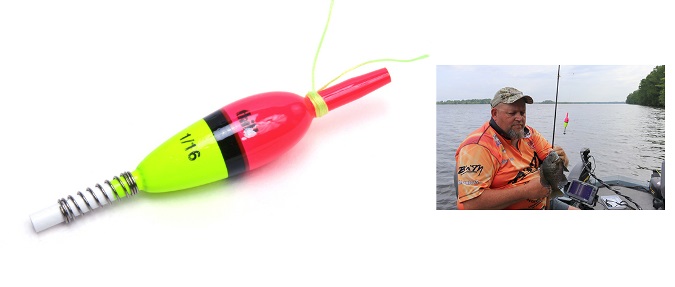At its core, fishing bluegill beds is the essence of simplicity. Cast a float and a cricket toward the bank, watch the float, and set the hook when the float darts out of sight. In truth, you often don’t need to know much more to at least catch some fish. That said, refining your approach and paying attention to details can help you catch far more fish on a more consistent basis and at times catch bigger bluegills.

Billy Blakley, the head guide at Blue Bank Resort on Tennessee’s Reelfoot Lake, understands bedding bluegills and the keys to catching them like few other anglers. Reelfoot is famous for its heavyweight bluegills, so folks arrive with palm-sized ‘gills in mind from late spring through well into summer and Blakley spends a lot of days casting cricket rigs. Plus, he has been guiding bluegill fishermen for four decades.
Evolving technology definitely has changed bluegill bed fishing. Once Blakley gets in an area where he expects fish to be bedding, he uses StructureScan Side-Viewing technology on his Lowrance HDS9 to find both beds and fish and uses front and bank anchors to position the boat right next to the fish.
“We don’t stop until we find them,” he said. “They might not bite some of the time, but we know they are there.”
Blakley hasn’t always enjoyed such luxury, though, and for folks who don’t have such revealing electronics his most important advice is to keep moving and let the fish reveal themselves. Blue Bank sends out many anglers in lodge boats as part of fishing packages, and Blakley will point anglers to a productive bank, tell them the depth to work, and advise that they stay mobile.
“Just keep working your way down the bank until you catch a fish,” he said. “When you do catch one, make that cast again and work that area more to see if you catch more. If there’s a bed, you’ll know it”
Blakley also keeps his float rig moving most of the time. He casts a little past where he expects the most fish to be, lets the rig settle, and then works it with tiny twitches of the rod tip, broken by pauses. That helps him cover territory and find the specific zone where the most fish are holding. As importantly, it adds a little action that prompts more strikes.
“They’ll hit it when its sitting still, but they’ll usually hit it better when you’re moving it a little,” he said.
Blakley pays careful attention to where every fish hits. Sometimes they’re spread over a big area and any cast in the right general area will do the job. Often, though, a certain spot produces the best action by far.
If the bluegills don’t bite well in a spot or the bite tapers off after Blakley’s group has caught several, he’s quick to lift his anchors and look for more fish that are more willing to bite. He’ll also move along if he catches a few bluegills that aren’t the size he is looking for from a spot, having found that the largest fish often will be together.
A waxworm or piece of a night crawler will work for bedding bluegills, but Blakley has found nothing that works better than a fresh cricket. Fresh is an important word, by the way. Once a cricket has been picked at and doesn’t look as good, the bluegills won’t hit it nearly as readily, so Blakley is quick to replace it with a fresh one.
Blakley prefers a slip float over a set float for most bluegill fishing. Beds with good fish on them in Reelfoot are often 3 or 4 feet deep, and he finds a slip float easier to manage, both for casting and for quickly adjusting depths. He likes a 1/8-ounce-rated Thill Crappie Cork, which provides just the right buoyancy to suspend a single large split shot and therefore reveals everything going on beneath the surface.
A No. 6 long-shank hook completes the rig. Blakley uses 6-pound test line on ultralight spinning reels matched with 10-foot B’n’M Poles Sam Heaton Super Sensitive rods.
Bluegills bed all summer long on Reelfoot Lake. Blakley normally begins finding beds around mid-May, and he’ll often catch bedding fish well into August. The beds normally are just a bit deeper and off the bank late in the summer, but his approach remains the same.
